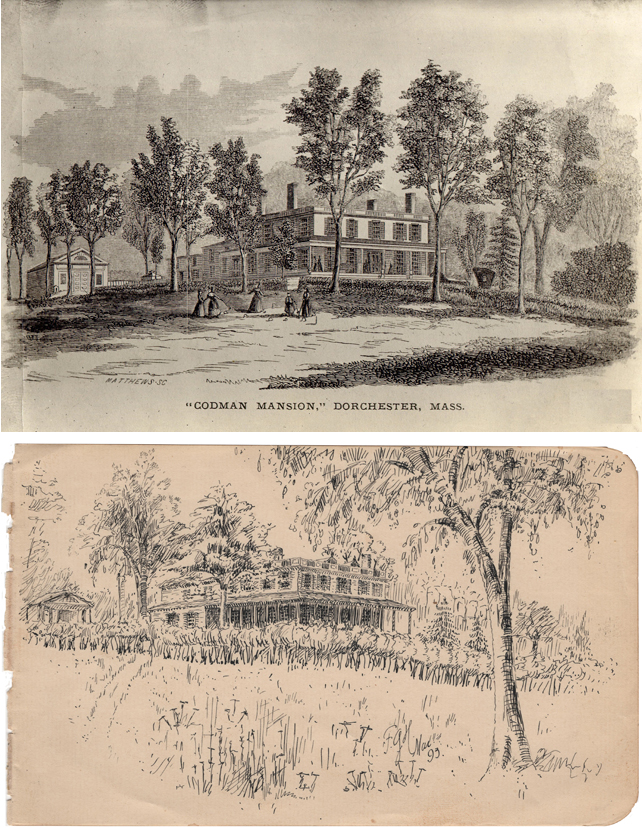
Today’s illustration includes two drawings of the Codman mansion. The lower image was torn from the same notebook as last week’s drawing (Blaney Memorial Baptist Church), by an artist who signed the image: F.G.H. We are still trying to find out more about his artist.
The following information is from the entry for Joseph Clapp in “The Clapp Memorial. The record of the Clapp Family in America” … Ebenezer Clapp, compiler. (Boston: David Clapp & Son, 1876)
“Dr. Codman graduated at Harvard College in 1802, studied for the ministry under the Rev. Henry Ware, then of Hingham, and in 1805 embarked for Europe, to finish his theological studies there [at Edinburgh University]. After spending three years broad, he returned home, and in August, 1808, first preached to the Second Church in Dorchester, then recently organized, their new meeting-house having been dedicated Oct. 30, 1806. He was ordained pastor of this church Dec. 7, 1808, the Rev. Dr. Channing (from whom he very soon after separated in theological belief) preaching the ordination sermon. In about a year after his settlement, commenced the celebrated controversy between him and many members of the parish, which lasted for three years, but neither the merits nor the details of which can be here entered into. In 1821, an interesting journey by Dr. C. and his wife was made to the state of Georgia, including a Sunday passed at Midway, among the descendants of the people of Dorchester who emigrated thence in 1695. They then took passage for Europe, returning home the next year. Two other visits to Europe were afterwards made by Dr. C. The position attained by Dr. Codman as pastor of the Second Church, and as a leading and able minister in the denomination to which he belonged, was elevated, and his death, which took place Dec. 23, 1847, in his 66th year, was much lamented.”
Dr. Codman bought a house on the hill at the northwest corner of what is now the intersection of Washington Street and Gallivan Boulevard. After his death, his heirs rented out the property, which was used in the second half of the 19th century as a school for young ladies and in the first half of the 20th century as a dairy farm.
